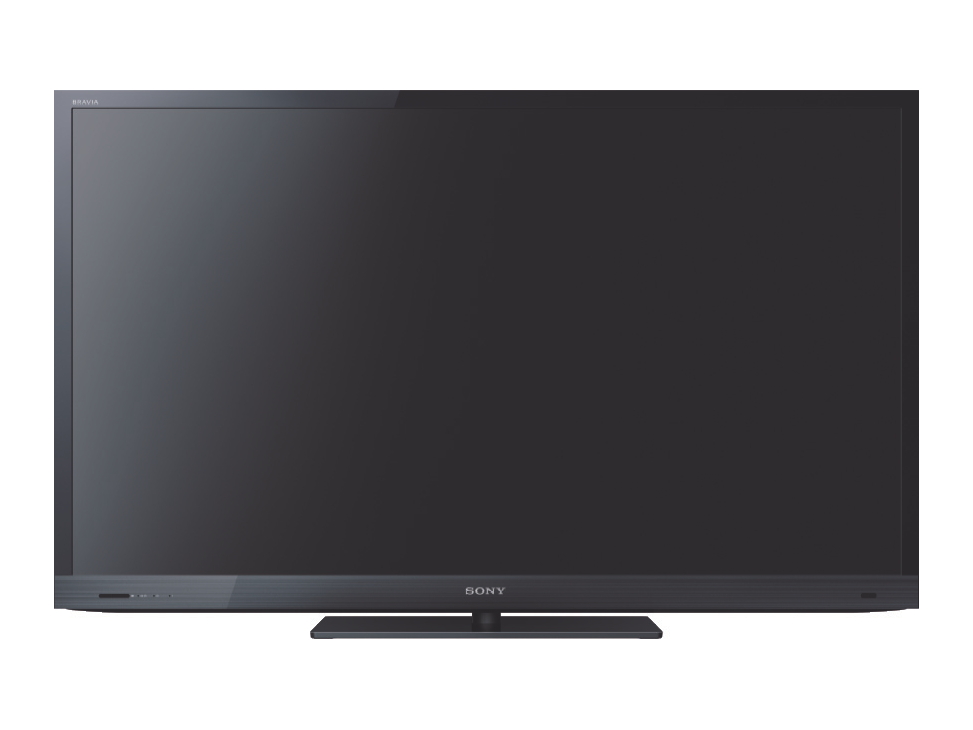Why you can trust TechRadar

Sony's 32EX723 is massively off the pace with its 3D performance. The main problem is that old issue of crosstalk noise, where the panel's inability to refresh itself fast enough to keep up with the alternating frame rate of the full HD left and right eye images causes double ghosting in the picture.
This sort of noise was common to all 2010 LCD TVs, but so far in 2011 it's been substantially reduced on the Samsung UE46D7000's 3D LCD screens and all but completely removed on Panasonic's ground-breaking DT30 LCD series. Plus it's seldom apparent on LG's 55LW650T. Yet on the 32EX723 it's still there, seemingly every bit as severely and distractingly as it was on Sony's 2010 models, such as the KDL-46NX713.
This affects the clarity of almost every 3D shot to some extent, and makes some scenes – including the notorious sequence on the Golden Gate Bridge in Monsters vs Aliens – borderline unwatchable.
It's especially bad because your eyes already feel strained by watching 3D on a screen as small 32-inches. As with Panasonic's otherwise impressive TX-L32DT30B, the 32EX723 shows again that 32-inches isn't big enough for 3D unless, perhaps, the TV is going to be used in a small bedroom or study, where you'll sit close to it.
Turning on Sony's active shutter glasses also causes a heavy drop in brightness and colour saturation compared to the Samsung and LG 3D TVs, plus a little more flickering than you might feel comfortable with, particularly if you've got a very bright room. These two issues wouldn't stop the pictures being enjoyable, though, if it wasn't for the unacceptable amounts of crosstalk as well.
As a final blow, the crosstalk seriously reduces the impact of the extra sharpness and HD detail that active 3D was developed to deliver – especially as the impact of this detailing is reduced by the smallness of the screen.
For the record, Sony's onboard 2D to 3D conversion is one of the more effective around, in terms of adding depth without causing depth errors. But thanks to all the crosstalk, you still wouldn't really want to watch it.
Shifting quickly to 2D, things improved markedly. The fuzzy mess of 3D is replaced by a pleasingly crisp picture in both HD and standard definition mode, the latter immediately proving the worth of the X-Reality engine. The resolution enhancement system is so sophisticated at boosting perceived resolution, without making the picture look noisy, that you might even want to try out the Detail Enhancer system.
Sony's MotionFlow system plays a part in clarity too, reducing juddering and blurring without making the picture look artificial, or causing side effects like flickering edges or haloes around moving objects. Just be sure to stick with the lowest power Clear setting.
The TV's black level response is good too. It takes a little work; you should try and keep the backlight set as low as you sensibly can, and while the Black Corrector and Advanced Contrast Enhancer can help, only use them on their very lowest settings, unless you want shadow detail to take a massive hit. As long as you follow these basic rules, black colours look surprisingly deep and convincing.
Backlight levels are mostly consistent too. Sure, you can make out faint light shooting in for a slim inch or two from the screen's corners, especially the bottom ones, but this is seldom visible under normal viewing conditions, and the amount of screen space affected is relatively minor.
When it comes to colour, the 32EX723 lacks the aggression and dynamism found with some rival sets, such as the Samsung UE46D7000. But while they might not explode off the screen at you, they're deftly rendered in terms of subtle colour shifts and blends, and generally look natural in tone. The colour balance is good too, with no particular hues tending to stand out from the others too much.
If you're a gamer, you'll feel reasonably pleased with the 32EX723's 40ms input lag time, which, while far from the lowest around, shouldn't cause you too many missed Guitar Hero notes or unnecessary Call of Duty deaths.
While viewing angles are inevitably limited versus IPS-Alpha LCD or plasma panels, black levels and contrast aren't affected as severely when viewed from the TV's side as they are with many other PVA panels.
Current page: Sony KDL-32EX723 review: Picture quality
Prev Page Sony KDL-32EX723 review: Features Next Page Sony KDL-32EX723: Sound, value, ease of useJohn has been writing about home entertainment technology for more than two decades - an especially impressive feat considering he still claims to only be 35 years old (yeah, right). In that time he’s reviewed hundreds if not thousands of TVs, projectors and speakers, and spent frankly far too long sitting by himself in a dark room.

